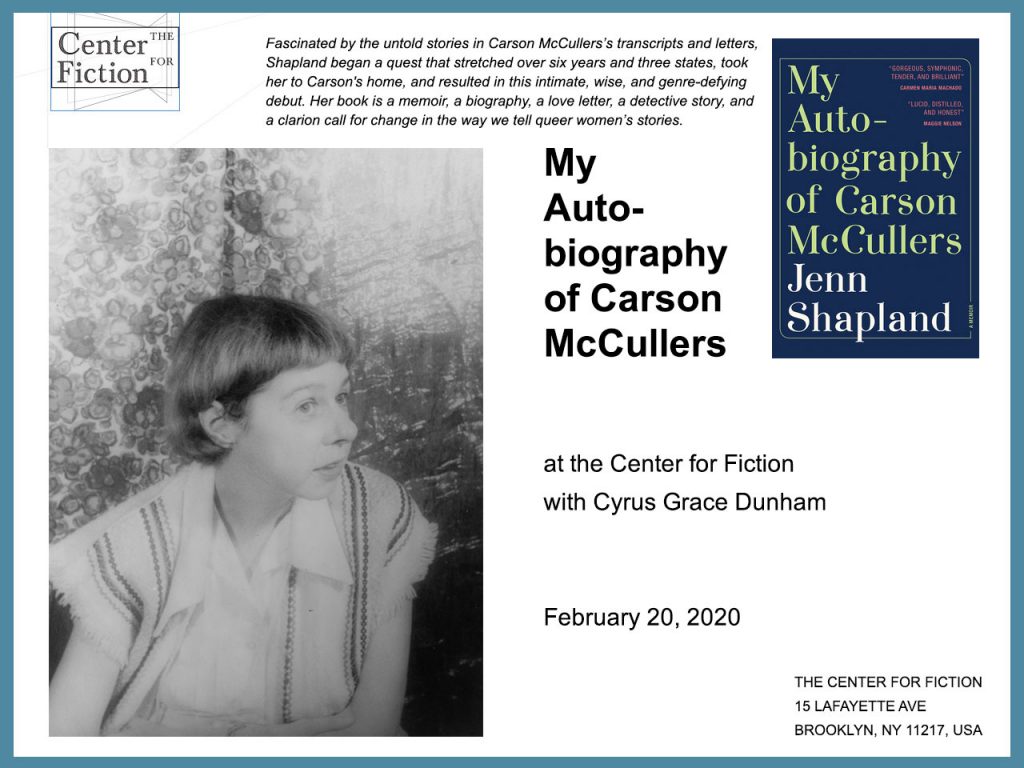
Shapland controls two narratives, the way a novel might alternate between two voices. Annemarie’s handwriting filled the page…” That is the first time we have heard about Annemarie. The paper was browned with age and wrinkled at the edges. The second chapter, for example, opens like this. Shapland uses many small fiction techniques to create a sense of intrigue and bring fictional craft to non-fiction writing.

Fiction and drama dislike crude exposition. History that attempts objectivity relies on exposition: the straightforward laying out of events. By accepting her presence as biographer, Shapland was free to experiment with biography as autobiography. Let’s put aside the rights and wrongs of this argument, and look first at what it means for technique. To tell another person’s story, a writer must make that person some version of herself, must find a way to inhabit her.” This is the premise of Jenn Shapland’s book My Autobiography of Carson McCullers, a title that makes explicit what is tacitly understood in all biographies - the impartial biographer is as much a myth as the impartial novelist. “To tell her own story, a writer must make herself a character.


 0 kommentar(er)
0 kommentar(er)
